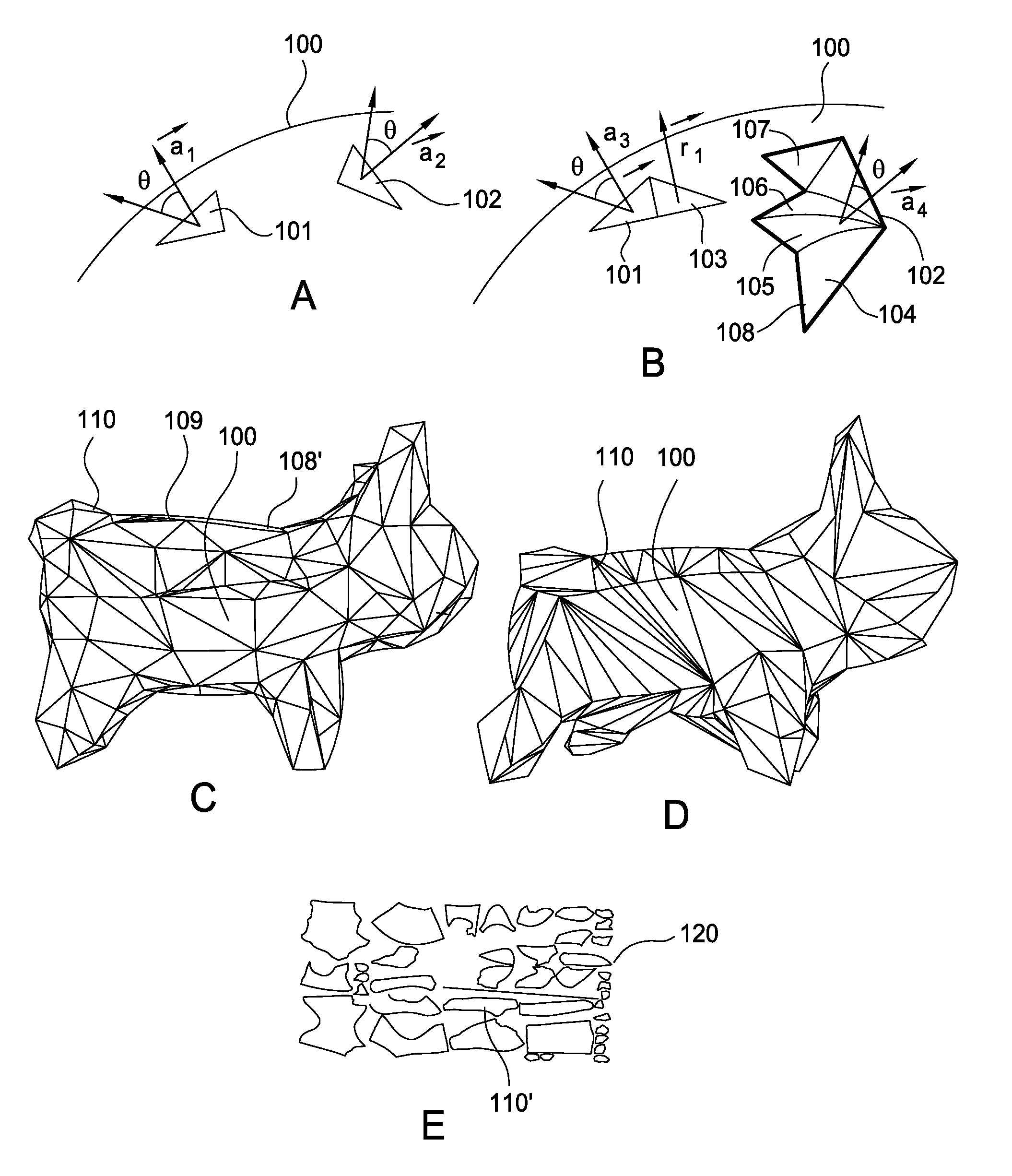Decomposition of 3D geometry into developable surface patches and 2d cut patterns
- Summary
- Abstract
- Description
- Claims
- Application Information
AI Technical Summary
Benefits of technology
Problems solved by technology
Method used
Image
Examples
Embodiment Construction
[0017]Embodiments disclosed herein provide techniques for decomposing 3D geometry into developable surface patches and cut patterns. In one embodiment, a decomposition application receives a triangulated 3D surface as input and determines approximately developable surface patches from the 3D surface using a variant of k-means clustering. Beginning with seed triangles, patches are iteratively grown by adding the face with minimum distance to any patch to that patch which has the minimum distance to the face, until no face is less than a threshold distance from its closest patch. As used herein, a face is a closed set of edges, such as a triangle. The decomposition application may also merge adjacent patches. Then, if significant surface area is not assigned to any patch, the decomposition application chooses new seeds that are as far from the current patches' boundaries as possible, and iteratively grows new patches from the new seeds.
[0018]Approximately developable surface patches m...
PUM
 Login to View More
Login to View More Abstract
Description
Claims
Application Information
 Login to View More
Login to View More - R&D
- Intellectual Property
- Life Sciences
- Materials
- Tech Scout
- Unparalleled Data Quality
- Higher Quality Content
- 60% Fewer Hallucinations
Browse by: Latest US Patents, China's latest patents, Technical Efficacy Thesaurus, Application Domain, Technology Topic, Popular Technical Reports.
© 2025 PatSnap. All rights reserved.Legal|Privacy policy|Modern Slavery Act Transparency Statement|Sitemap|About US| Contact US: help@patsnap.com



